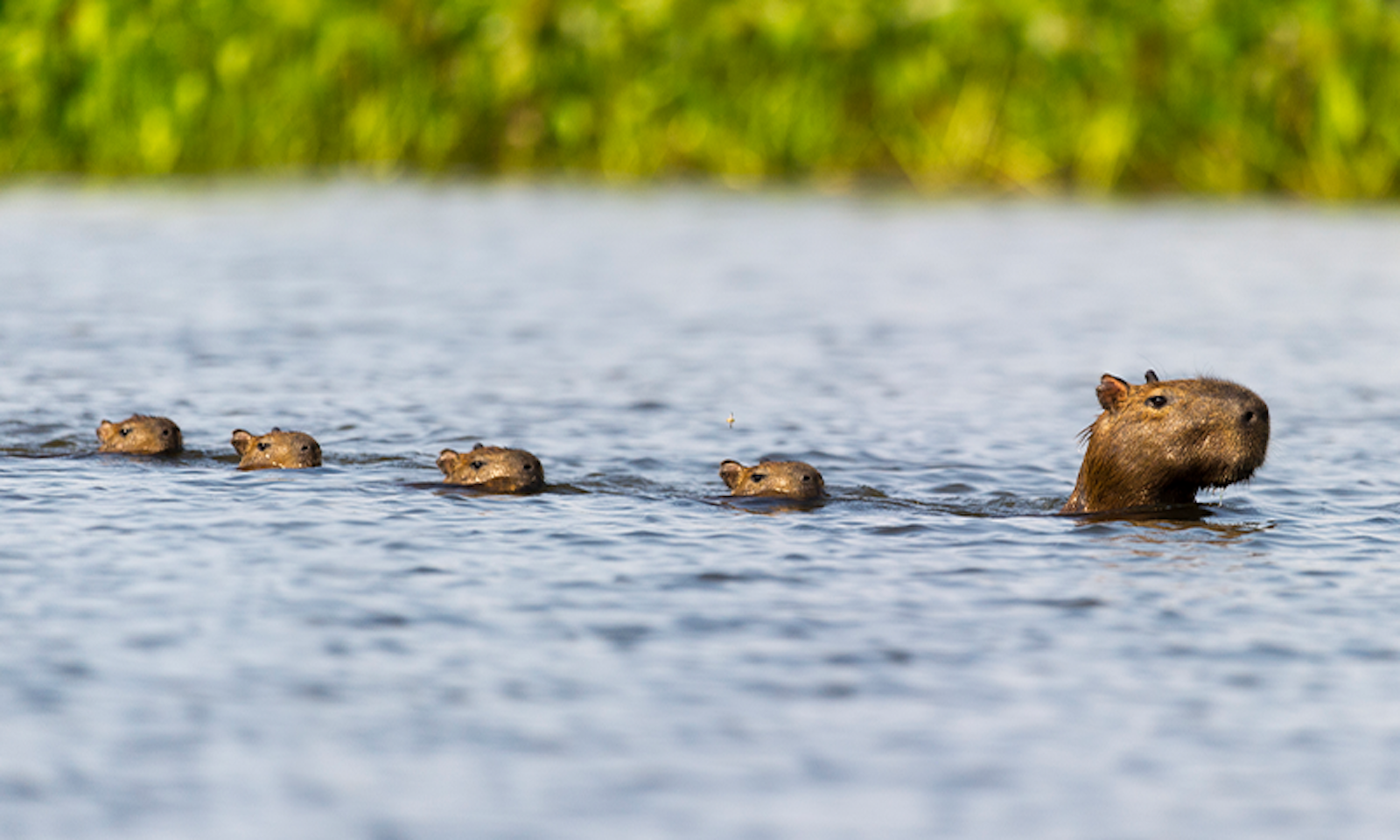Nick Garbutt was leading a photography tour in the tropical wetlands and flooded savannas of Brazil’s Pantanal region when he spotted a dark shadow in the brush. It was a jaguar, and the cat was stalking a family of capybaras munching plants at the edge of the Paraguay River. Although jaguars are agile swimmers and have been known to prey on turtles, crocodiles, and even dolphins, one of their favorite foods is capybara—the world’s largest rodent, about the size of a full-grown gray wolf.
In places like the Pantanal where jaguar populations are particularly dense, capybaras tend to stick close to rivers and other bodies of water. Even though jaguars don’t mind getting wet, capybaras have a greater chance of swimming to safety than scurrying away on land. The semi-aquatic rodents have webbed feet to propel them through water, and—as German explorer Hans Staden described in 1557—“when anything alarms them, they flee into the water toward the bottom.” Capybaras can hold their breath for up to five minutes, and are so well adapted to their aqueous habitat that they’ve been filmed trotting along river bottoms.
Capybaras’ eyes, ears, and nose are all perched high on their heads, allowing them to stay mostly submerged.
As Garbutt watched from a boat, the jaguar crept closer to the capybaras. About 60 feet away, the predator paused. “Suddenly,” Garbutt recalls, “the jaguar rushed, but the capybaras were fractionally quicker, leaping immediately into the water and diving beneath the surface.”
The jaguar didn’t follow, and the capybaras eventually resurfaced in a neat line, the mother loudly barking her alarm. Capybaras’ eyes, ears, and nose are all perched high on their heads, allowing them to stay mostly submerged with just the crowns sticking out like periscopes. These capybaras stayed in the water, while the jaguar crouched on land, watching.
“It was an amazing little snippet of behavior to witness,” Garbutt says. It was also an example of the ways in which predator-prey relationships shape the ecosystems of the Pantanal and beyond. In places where jaguars have been extirpated, for example, capybaras venture farther from waterways to forage, and have been known to reach such high population densities that they’re sometimes considered a nuisance. The lack of jaguars is partially to blame—or thank—for the hundreds of capybaras that have “invaded” a gated community and torn up manicured lawns near Buenos Aires, Argentina. But out in the suburbs, when capybaras face off against resident pet dogs, there are few places where mamas and kids can dive to safety. ![]()
This story originally appeared in bioGraphic, an independent magazine about nature and regeneration powered by the California Academy of Sciences.




























